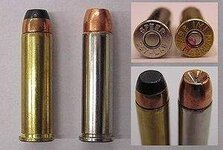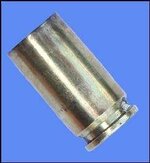- Messages
- 73
- Reactions
- 7
I've always been told that trimming pistol brass is not needed for safety since in the life span off the case (9mm for me) it will crack before it will go over max OAL.
But what about for accuracy? I do use a RCBS bullet seater w/ no crimp and then a lee factory crimp. This weekend taking my 226 out to the range I noticed some rounds going awry @ 25m-50m. I'd like to think this was some brass that was way longer than anything else in my brass pile, and if I really wanted consistent ammo should I trim the brass?
But what about for accuracy? I do use a RCBS bullet seater w/ no crimp and then a lee factory crimp. This weekend taking my 226 out to the range I noticed some rounds going awry @ 25m-50m. I'd like to think this was some brass that was way longer than anything else in my brass pile, and if I really wanted consistent ammo should I trim the brass?













